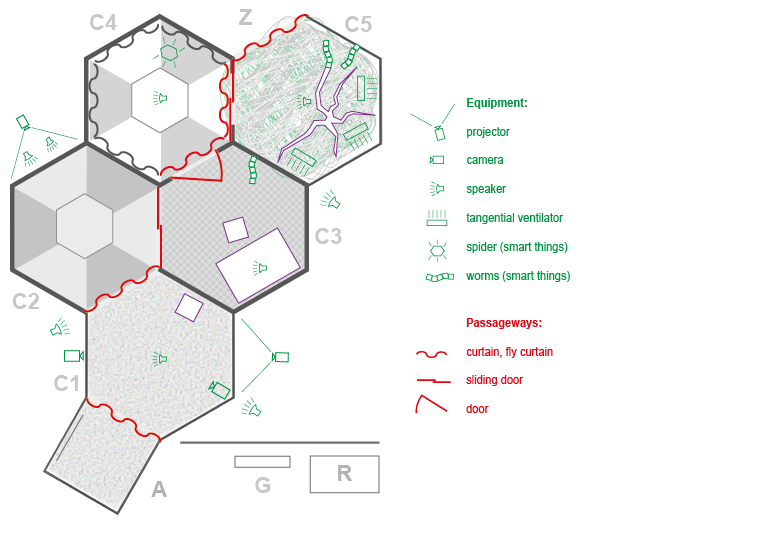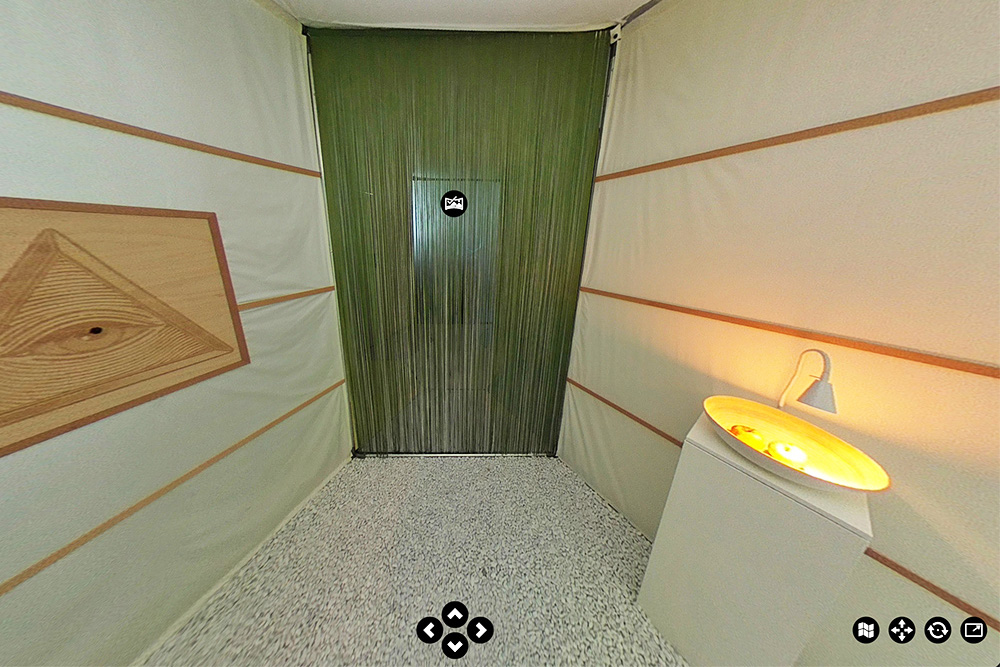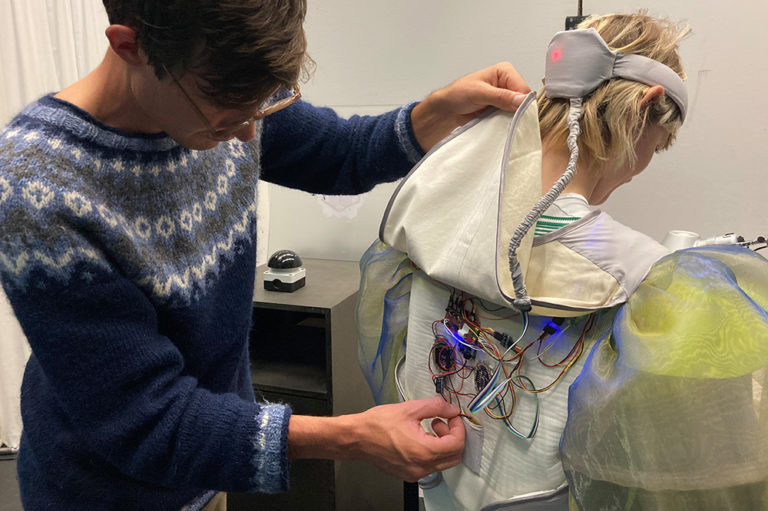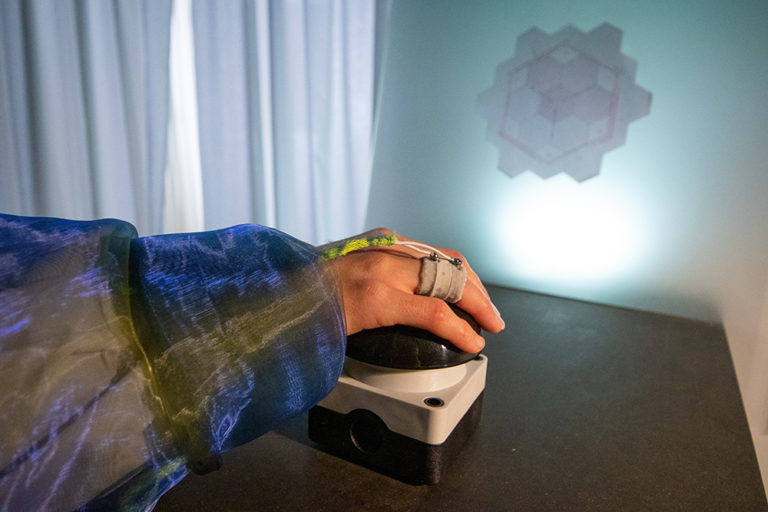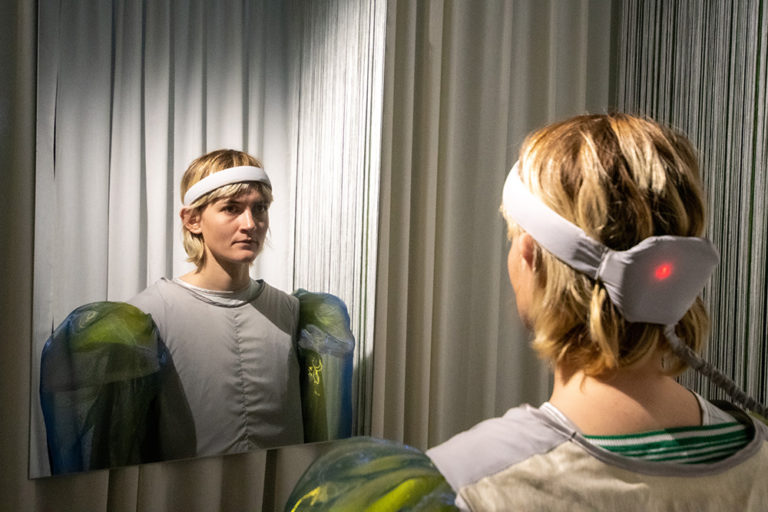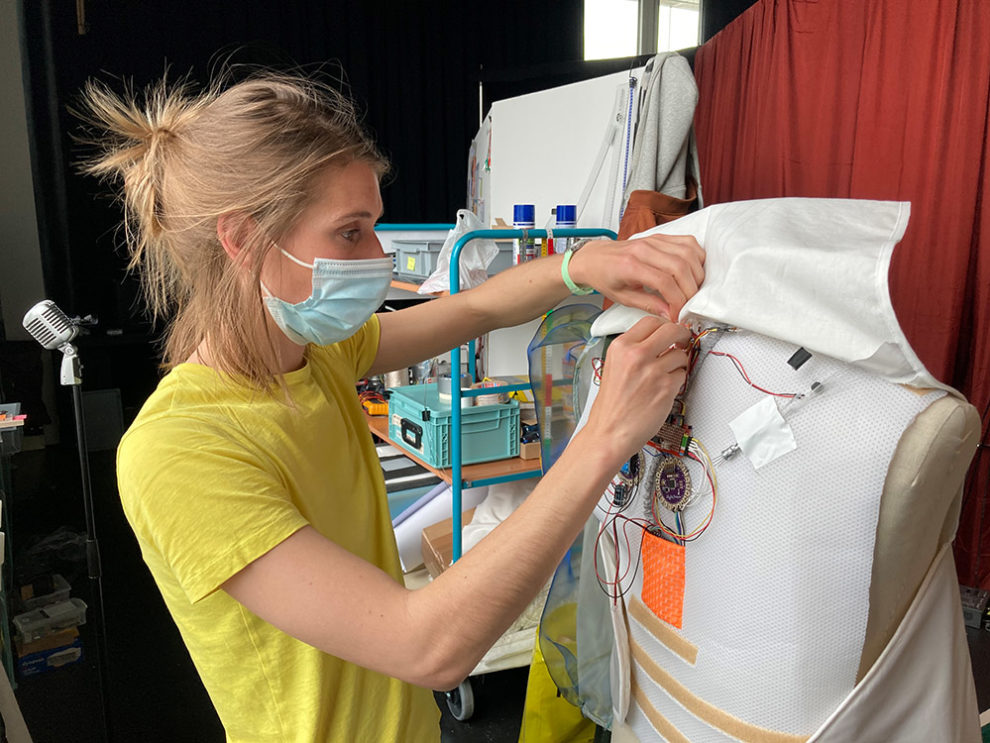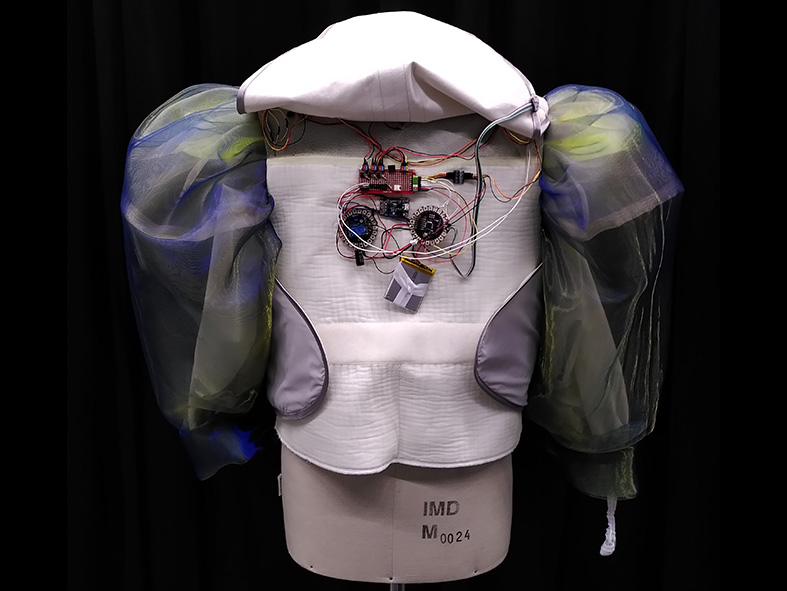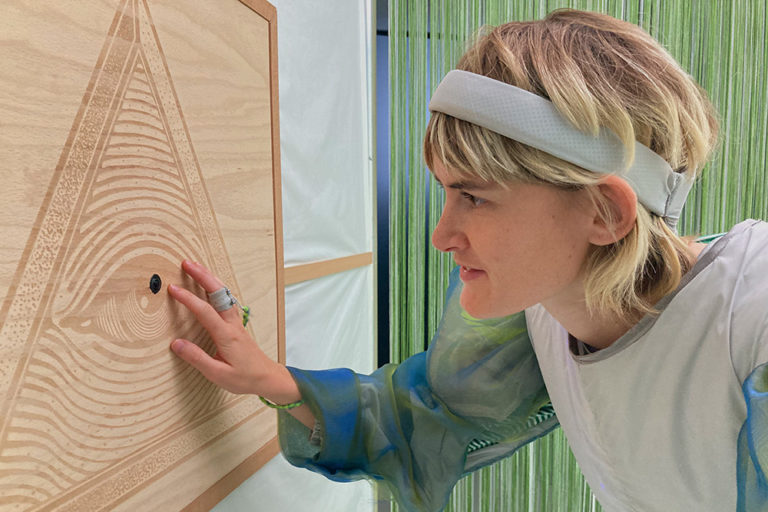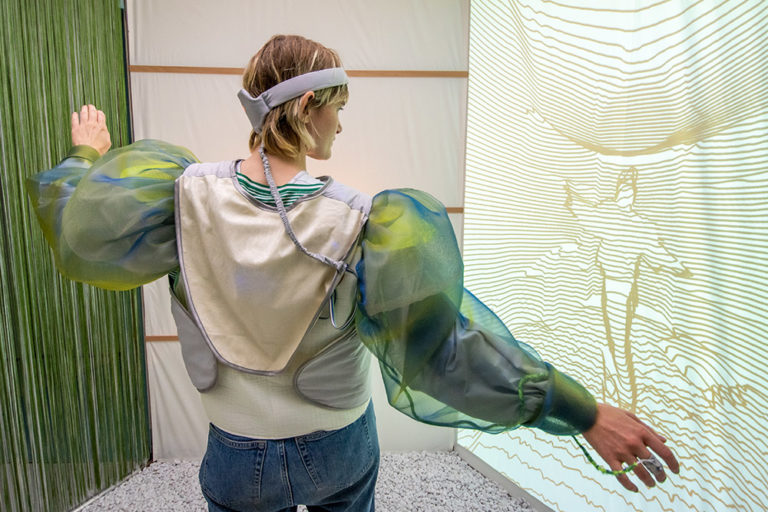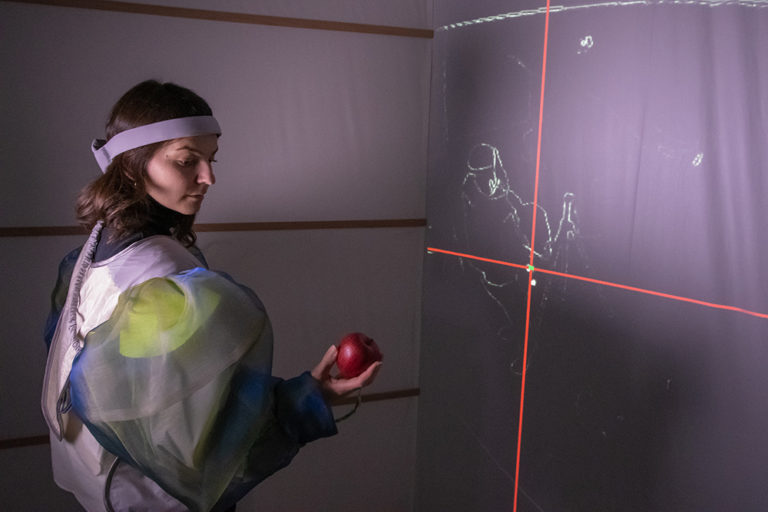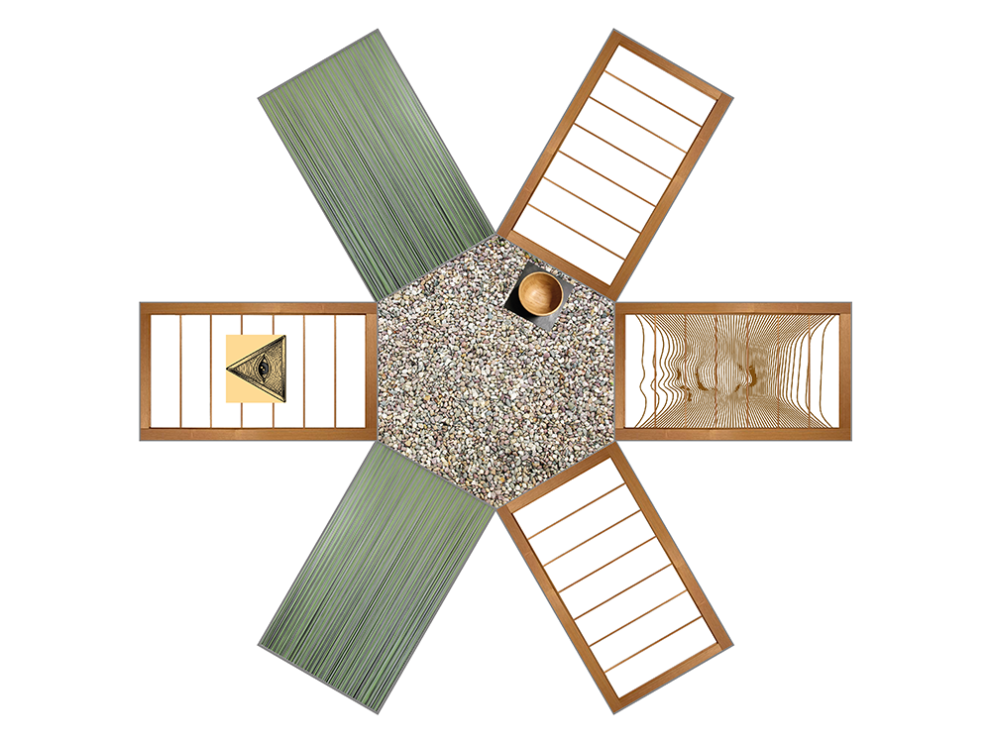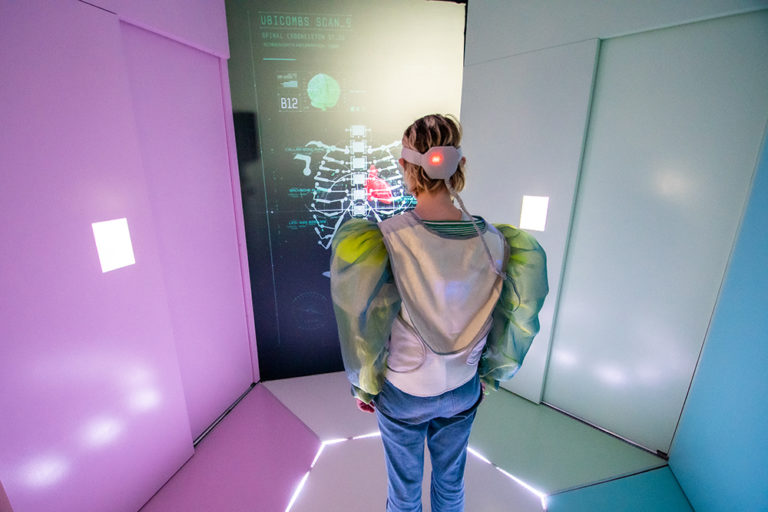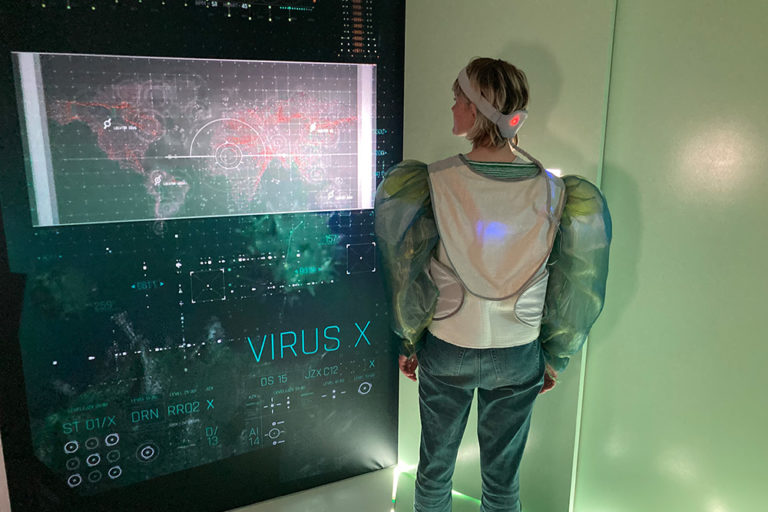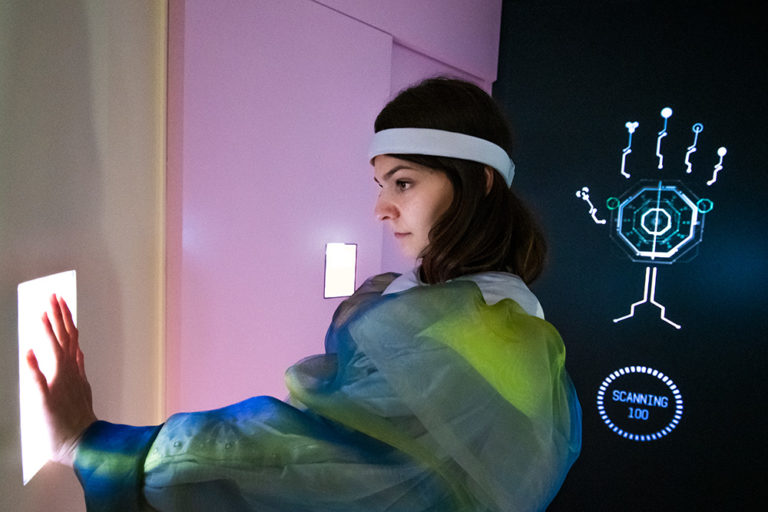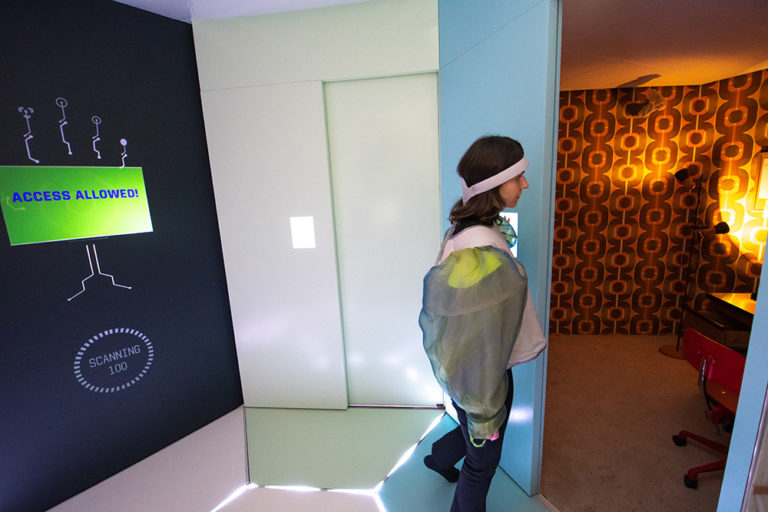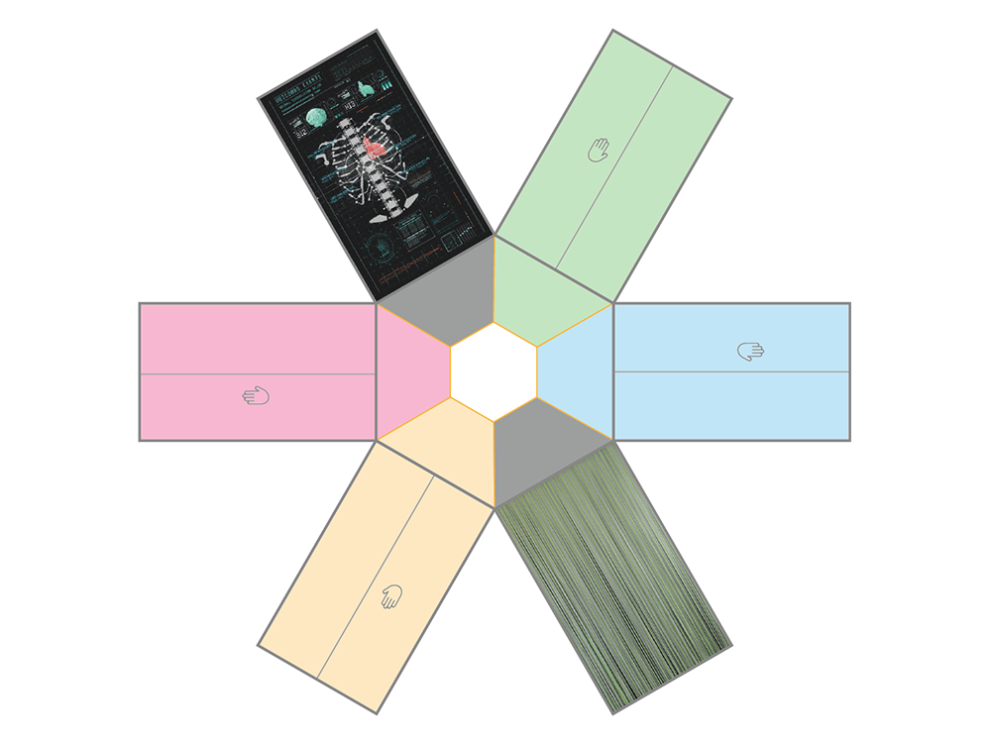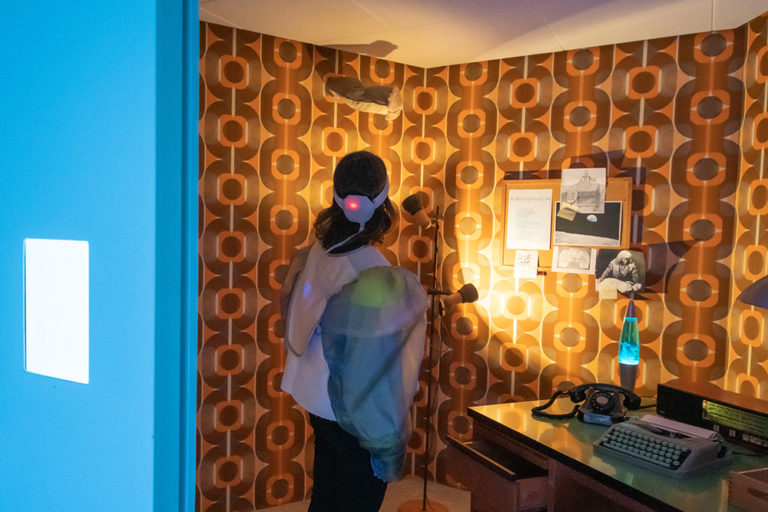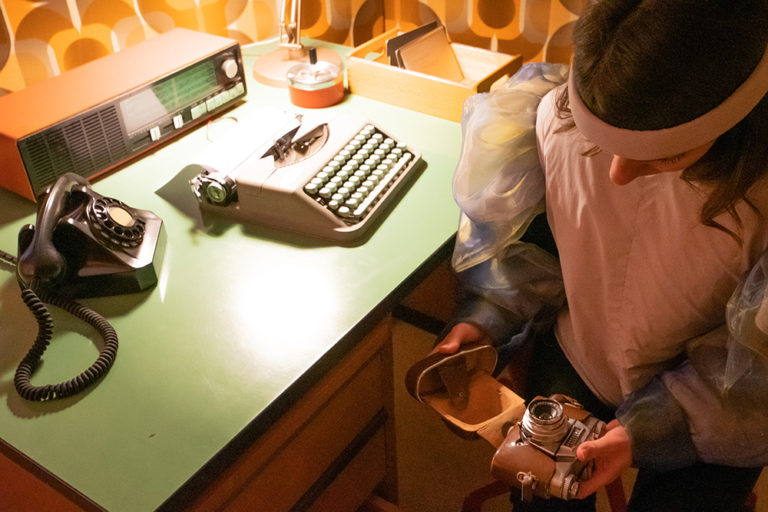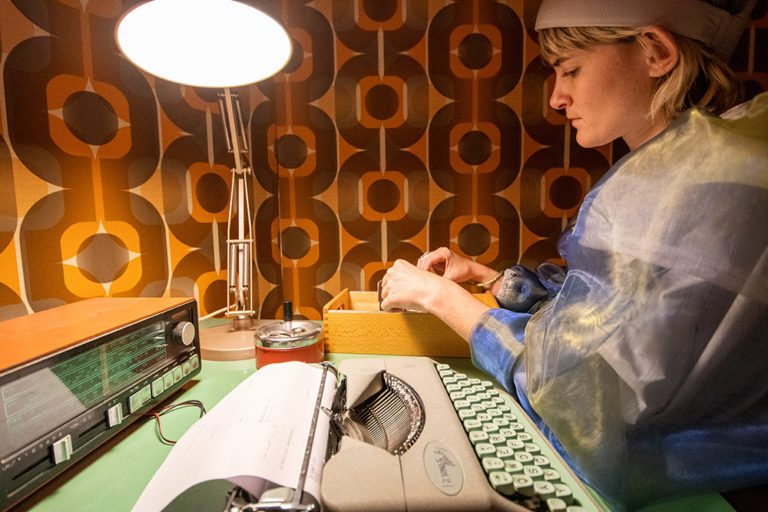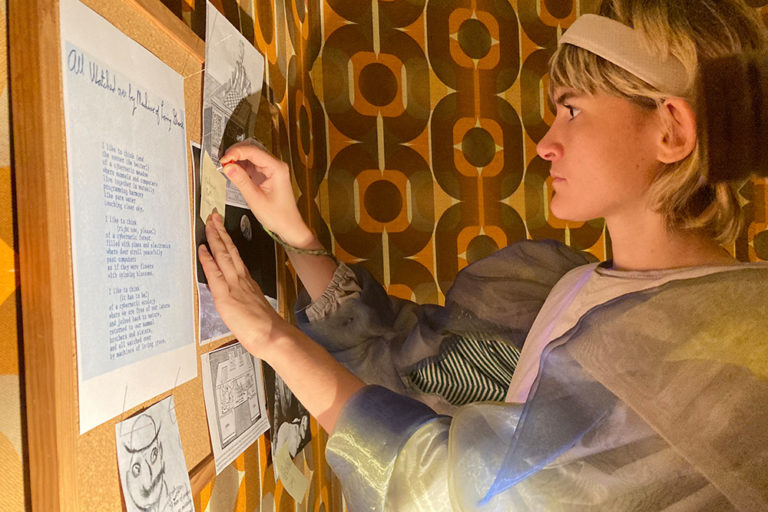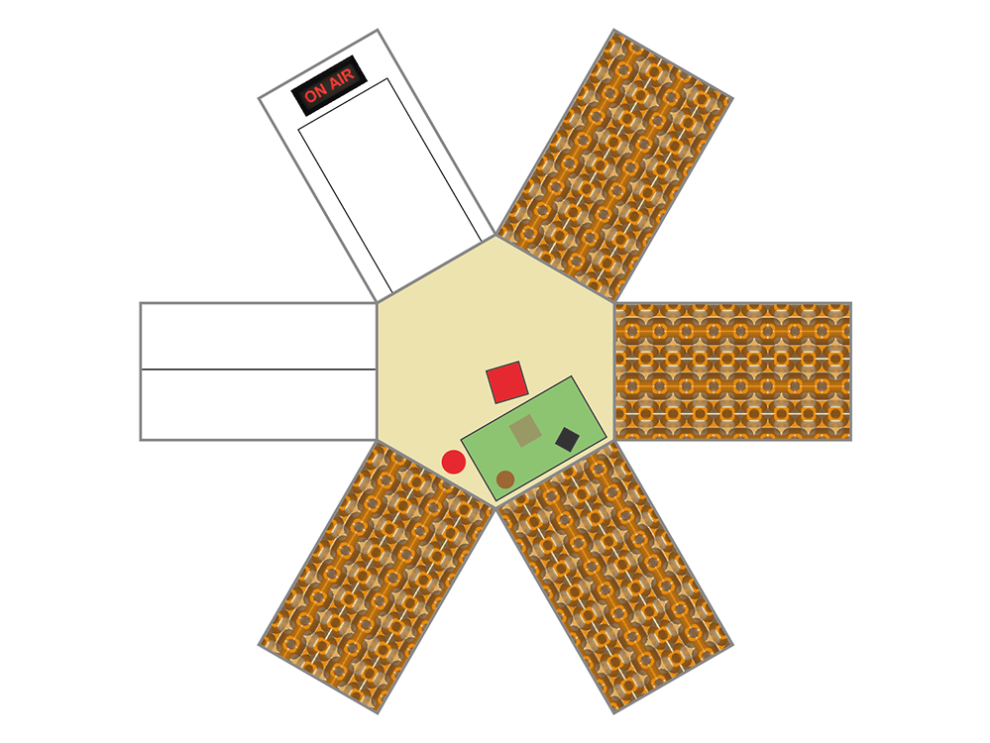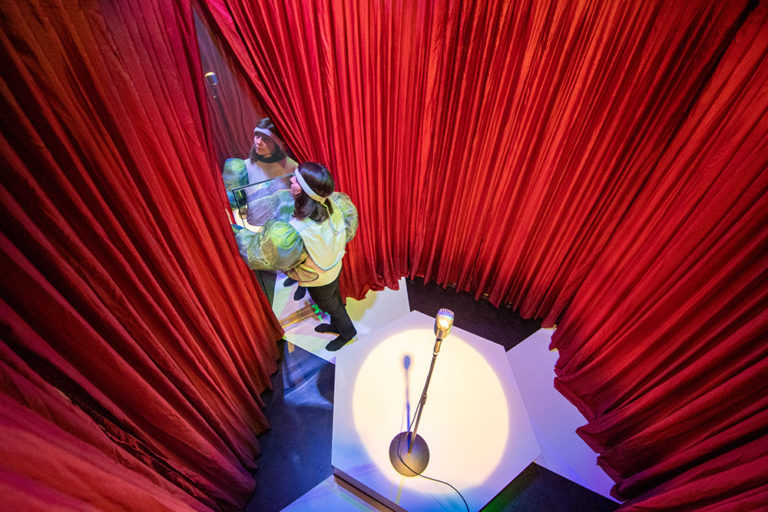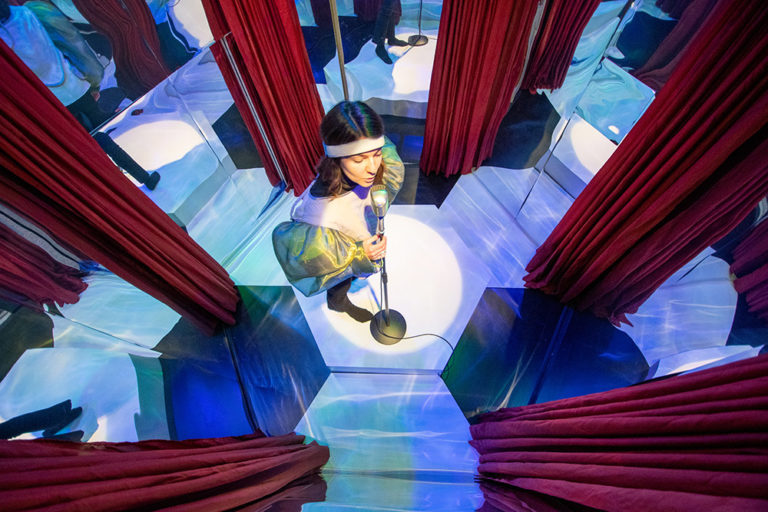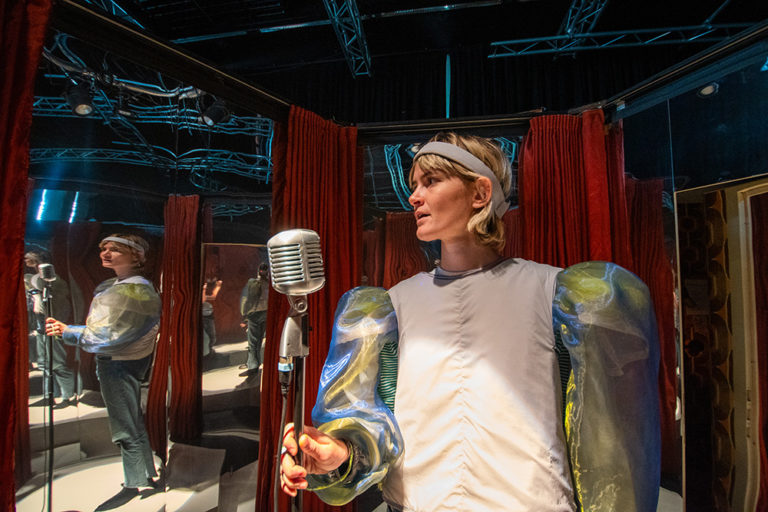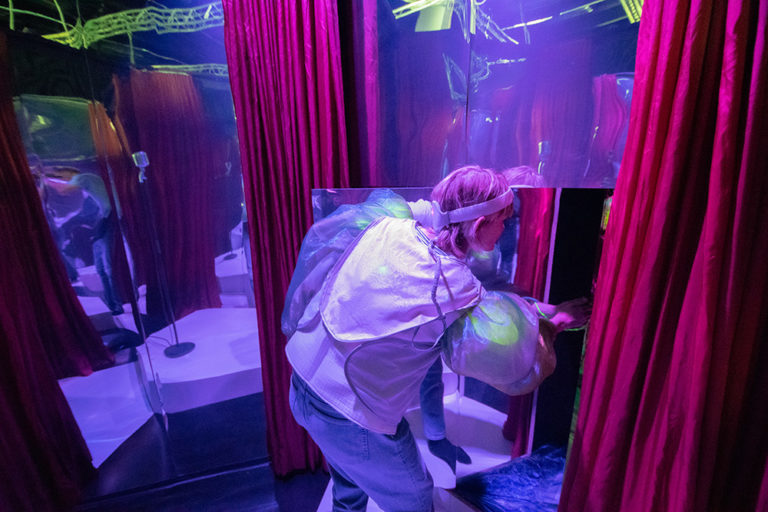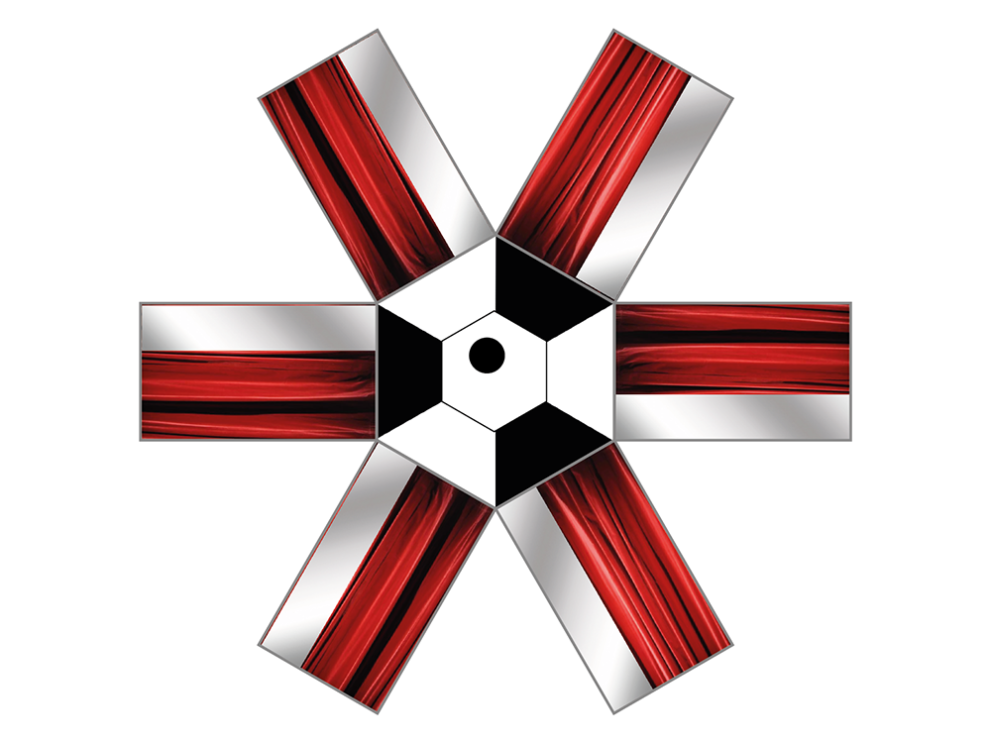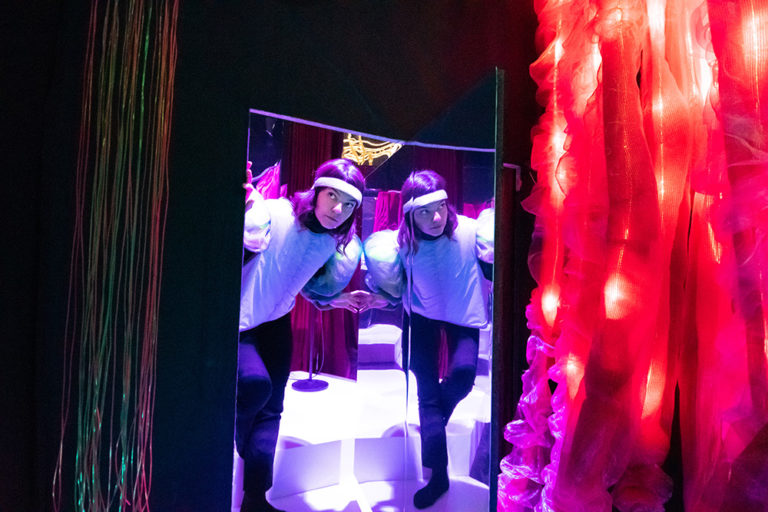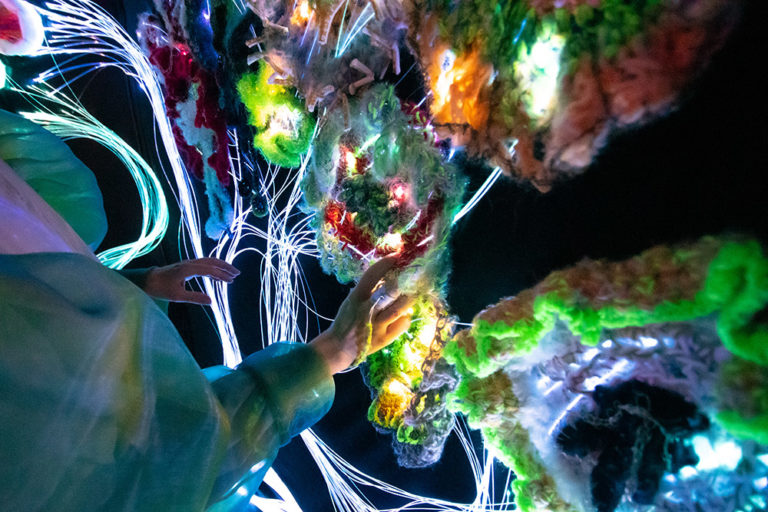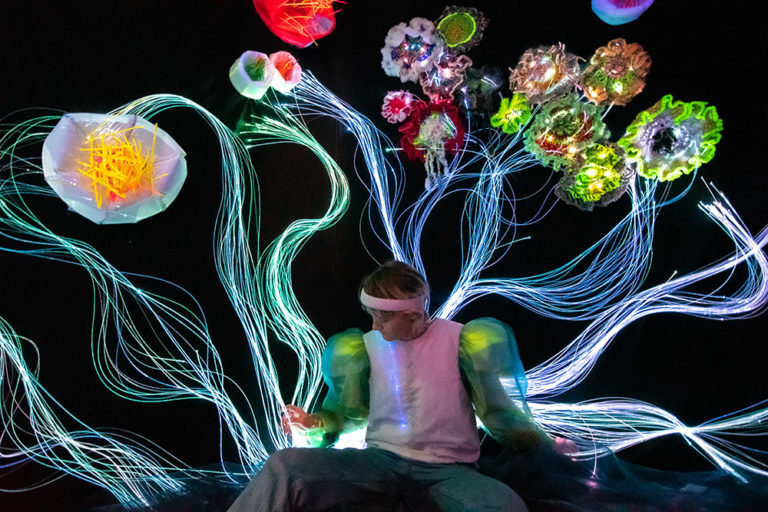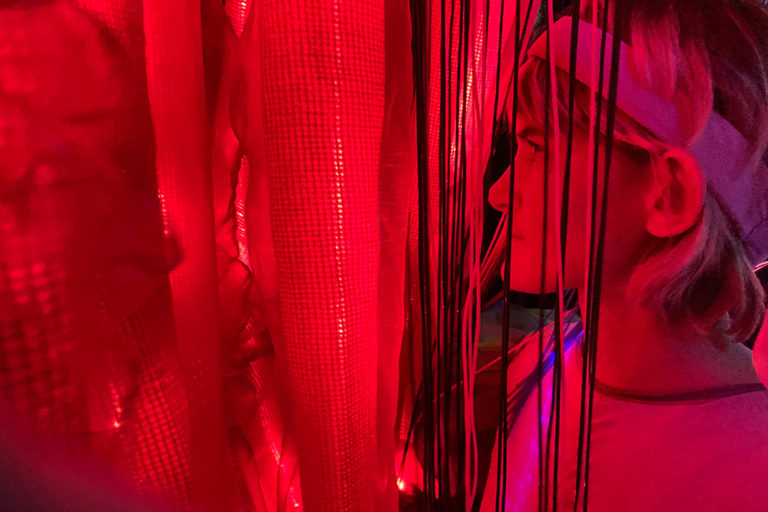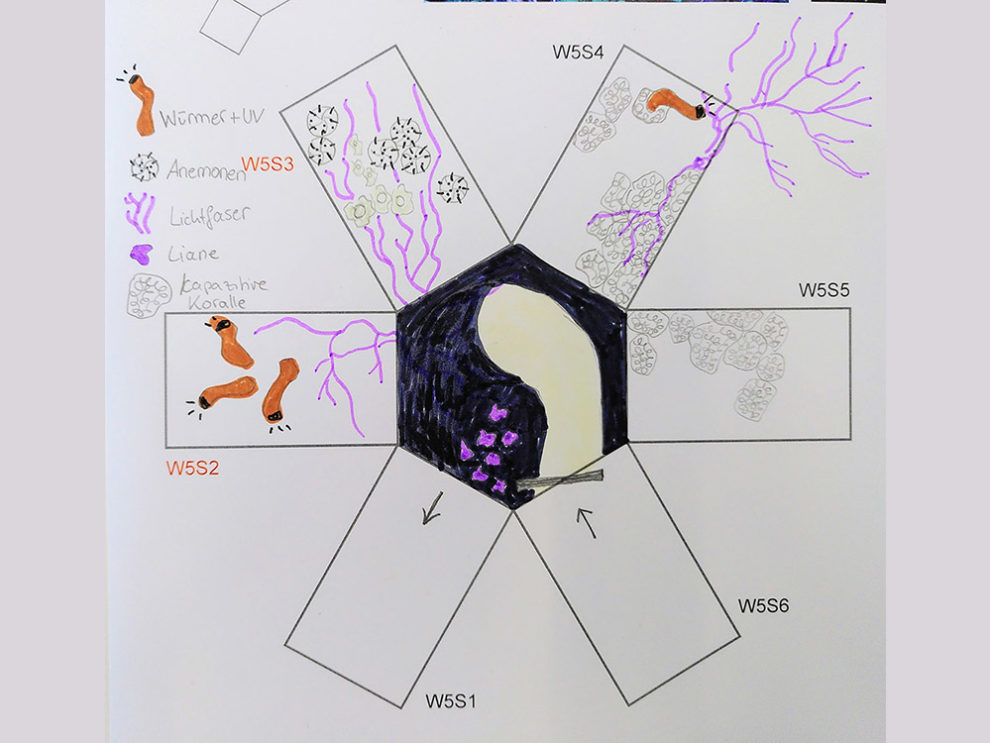Strategies and research foci
The entire installation allows interaction with the technical system on different levels: on the one hand, each ubiCombhas its own story and mechanisms; on the other hand, there is also an overarching narrative and technological implementations like a tracking system and a time-based system that control space and time for all the combs. Both aspects merge in a fluid experience that is driven by explorative curiosity through the explicit breaks.
Since test persons will react in individual ways, we identify and contextually categorize behavioral patterns with the help of a simple AI system. In order to evoke an ambivalent relationship between technological system and human on a responsive level, we create a techno-social hybrid with shifting proportions of agency. The garment also functions in this respect, coming as close as possible to the body and yet remaining an extrinsic part of it. It marks the individual as a third party who will always experience processes of border crossing. User or used?
With regard to the entanglement of human actors and technological sensor-actuator systems, the concept of affordance becomes the central pivot: the environment produces perceptual offers and invites the subjects to re-act. The interpretative handling of the underlying cultural and functional anchors is an important design element.
The entire artistic setting is a «method space» for scientific investigations, which are not concerned with the development of concrete applications, but with a critical reflection on the manifold connections between technical, human and design epistemology. Strategies and forms of expression of media art and Speculative & Critical Design – such as staging, intensification and abstraction – make it possible to make key situations tangible and thus negotiable. In the form of the interactive spaces described above, narrative structures and cultural-historical references create disconcerting, confrontational or ambiguous situations that know how to mediate between humans and technology. The situations trigger appropriation processes by evoking emotional reactions, stimulating cognitive interpretation processes, and inviting action.
The exemplary ubiComp paradigms of invisibility, immediacy, networking and ubiquity serve as content-creative foundations and evaluation criteria. The research installation is evaluated with test subjects in terms of appropriation criteria of experience (perception of events), sensation (emotional perception), behavior (action and reaction), association (cognitive attribution), and interpretation (reflection). The artistic implementation and evaluation will also serve to develop alternative design options, elaborate new design principles, situate possible implications, and sketch future scenarios. In all of this, the following dimensions will map a consecutive guideline:
- Technology: How are technical sensors constructed and how does their perceptual world emerge? What interaction situations do they generate?
- Human: How does the relationship between humans and machines change due to the disappearance of interfaces? Which strategies do humans develop to cognitively and emotionally access an environment enhanced by ubiComp?
- Design: Which creative forms of translation from technological sensor measurements to the sensually perceptible physical environment of humans (data mapping) are suitable so that they can experience them directly emotionally and grasp them cognitively? How do critical human-machine situations and appropriation processes arise?
Ultimately, it is a matter of opening up the realm of agency, which is subject to massive change and is visibly shifting into a hybrid-relational space.


